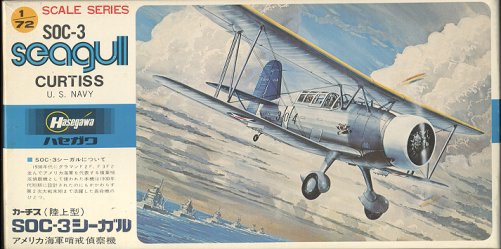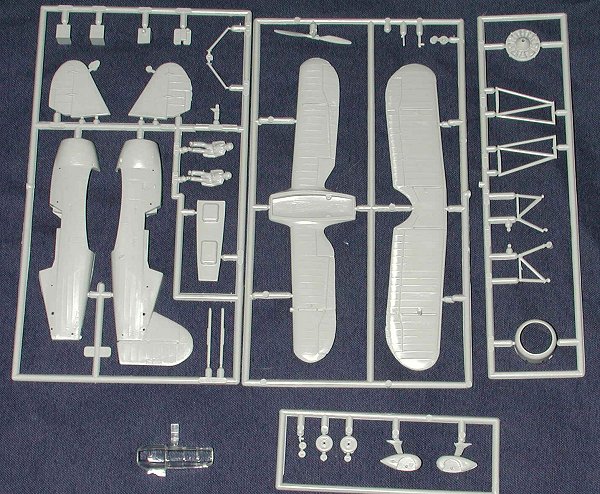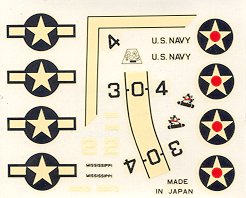
|
KIT: |
Hasegawa 1/72 SOC-3 Seagull |
|
KIT # |
A 14 |
|
PRICE: |
$5.00 at a swap meet |
|
DECALS: |
Two options |
|
REVIEWER: |
Scott Van Aken |
|
NOTES: |

|
HISTORY |
First ordered in 1933 and flown a year later, the SOC entered service in late 1935 and had superseded the Fleet's earlier shipboard floatplanes by the end of the decade. With production completed in 1938, its ageing design was then nearly ready for replacement by newer medium-powered monoplane types. By late 1941, battleships generally carried the Vought OS2U, whose non-folding wings were not required on the hangar-less "battlewagons". It was expected that cruisers would soon get the Curtiss SO3C, which had folding wings. However, the latter aircraft was never quite satisfactory, requiring the SOC to serve on board first-line cruisers until quite late in World War II, when the high-performance Curtiss SC became available. Thus, at a time when massive wartime aircraft production allowed rapid turnover among combat units' aircraft inventories, the elderly SOCs were "nursed" along, credibly performing their vital gunfire observation and limited-range scouting missions well beyond their expected lifespan. A few even served in the post-war Navy.
|
THE KIT |

This kit is an example of one of the earlier releases; before Hasegawa went the engraved panel line route. Not as old as the F-100 and others, but pretty close. This kit shares 95% of its parts with a companion kit that includes the floats, but this one is equipped only with wheels. In terms of detail, it is well done with nicely raised panel lines and a fairly good fabric representation. The kit suffers somewhat with mold flash and some sink areas, the latter being confined to the wheel spats. A one-piece canopy is provided that is thick, but clear. The interior consists solely of seats, crew members, a floor and a radio for the GIB (guy in back). All the struts are designed to fit into large slots in the wings. This makes for an easy assembly, but means that you'll have some difficult seams to fill. The kit also comes complete with the holes in the bottom of the lower wing for the wing tip and centerline floats. These will have to be filled and no mention of them is provided with the instructions. I guess things like that were not important in 1976 or so.
 Instructions
are old time with a written step by step construction sequence to go
along with the drawings. Colors are generic and do have numbers with them
as well, though no reference to whose paints. The numbers are pretty much
the same as what Gunze now uses. Markings are for two planes. One is the
box art aircraft in pre-war colors aboard the USS Mississippi. The other
is a tri-color scheme from SOU-3. Decals are well printed, quite thick
and with white that is ivory, as was the norm with Hasegawa for decades.
Though they are quite old, I'd bet that they'd still work. To my
knowledge, there are no aftermarket choices so these are it.
Instructions
are old time with a written step by step construction sequence to go
along with the drawings. Colors are generic and do have numbers with them
as well, though no reference to whose paints. The numbers are pretty much
the same as what Gunze now uses. Markings are for two planes. One is the
box art aircraft in pre-war colors aboard the USS Mississippi. The other
is a tri-color scheme from SOU-3. Decals are well printed, quite thick
and with white that is ivory, as was the norm with Hasegawa for decades.
Though they are quite old, I'd bet that they'd still work. To my
knowledge, there are no aftermarket choices so these are it.
Though not currently (March 2004) in the catalogues, this kit isn't that difficult to find at swap meets, and usually for $5 or so.
|
CONCLUSIONS |
These older Hasegawa kits are usually very simple to build and while not up to modern specs, there is no other in this scale.
If you would like your product reviewed fairly and quickly by a site that has nearly 250,000 visitors a month, please contact me or see other details in the Note to Contributors.